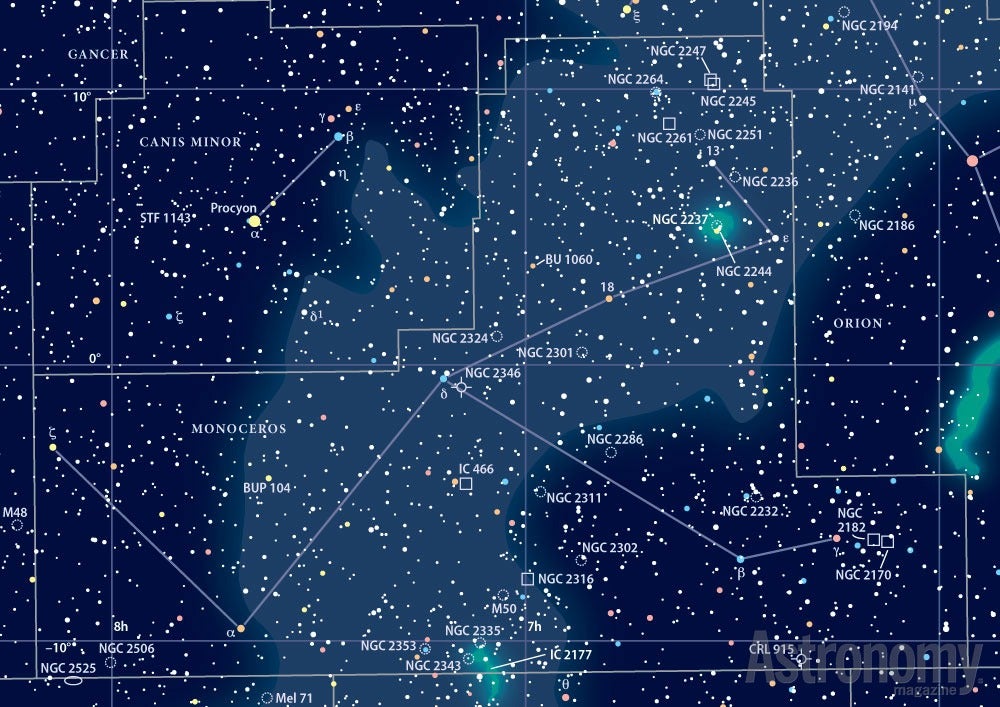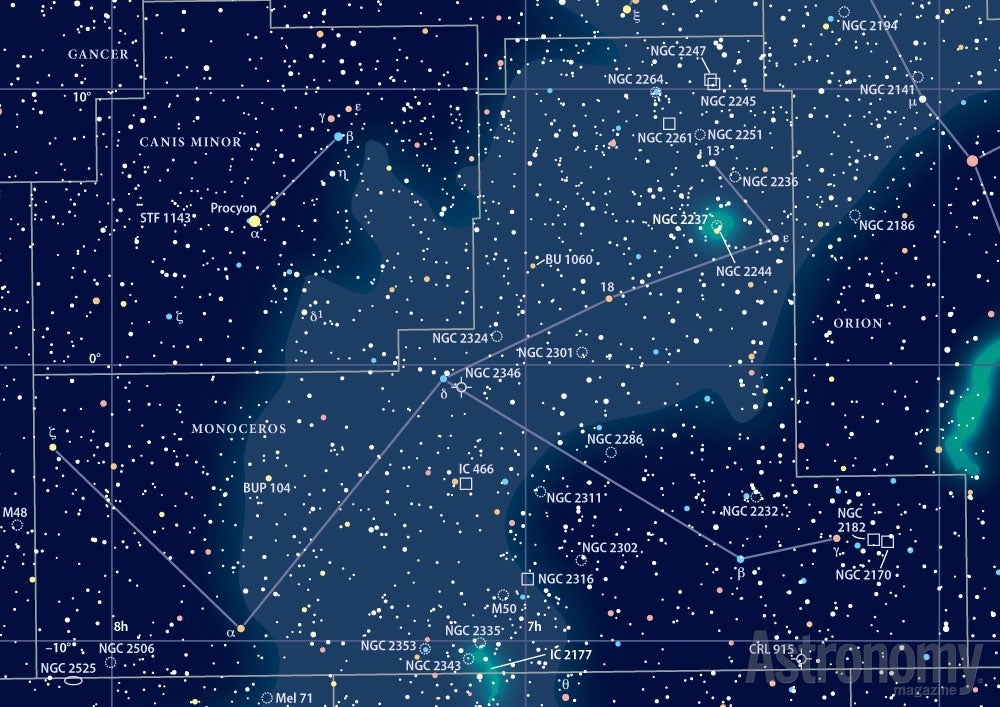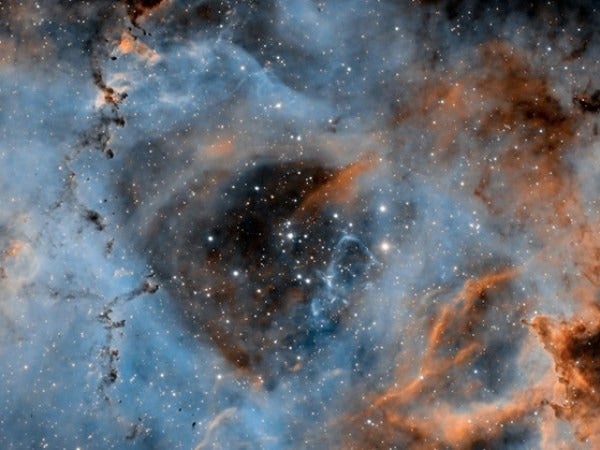
The Beehive Cluster (M44) in Cancer is an excellent target for naked-eye and binocular observers, open cluster M50 in Monoceros offers small-telescope owners nice views, and large-telescope owners can seek out the Rosette Nebula (NGC 2237–9/46), also in Monoceros.
Targets for Feb. 21–28
Naked eye: The Beehive Cluster (M44)
Small telescope: Open cluster M50
Large telescope: The Rosette Nebula (NGC 2237–9/46)
Away in a manger
This week’s naked-eye object is the Beehive Cluster in Cancer the Crab. Because this cluster is bright — magnitude 3.1 — it has acquired other proper names throughout history. Messier made it number 44 on his famous list of deep-sky objects that weren’t comets, so most amateur astronomers today call it M44. And 2,000 years ago, it was the Praesepe, the Latin word for manger.
You’d think such a bright object would be apparent immediately, but, unfortunately, the Beehive lies in the ultra-faint constellation Cancer. Actually, the best way to find it is to use three 1st-magnitude stars — but they’re not in Cancer.
First, find the “twin stars” Castor and Pollux in Gemini. Then, not quite one-fifth of the way across the sky to the east, locate Regulus, the brightest star in Leo the Lion. M44 lies roughly midway between them.
You won’t see it with your naked eyes under even a moderately light-polluted sky. Although the Beehive Cluster shines at 3rd magnitude, it measures more than a degree across. That means its light spreads out over an area equal to 5.5 Full Moons. If your eyes alone can’t pick it out, you’ll have no problem spotting it through binoculars.
Forget-me-not
This week’s small telescope target is open cluster M50 in Monoceros. You know, Messier’s list is full of spectacular objects — the Andromeda Galaxy is M31; the Orion Nebula is M42; and M51 is the Whirlpool Galaxy. In such illustrious company, M50 might feel a bit intimidated.

Well, it shouldn’t. At magnitude 5.9, sharp-eyed observers under a dark sky can spot this cluster with their naked eyes. Through a small telescope at 100x, you’ll spot 50 stars in an area 12′ across. The brightest glows at 8th magnitude, and many more 8th- to 10th-magnitude stars form curving chains within the cluster.
You may not have heard much about M50, but don’t overlook it. It’s a hidden gem that will reward you for observing it.
A multilayered winter flower
This week’s deep-sky object is the Rosette Nebula, which also lies in Monoceros. Most observers recognize it as a single deep-sky wonder. The Rosette, however, has four NGC numbers assigned to it by astronomers, and those don’t include the star cluster NGC 2244 at its center. The four designations for the nebula are NGC 2237, NGC 2238, NGC 2239, and NGC 2246.

From a dark site, you’ll first spot NGC 2244. Several dozen stars — a half dozen brighter than 8th magnitude — lie within an oval region elongated northwest to southeast.
To best observe the Rosette Nebula, use a 10-inch or larger telescope and an eyepiece that gives a magnification of 50x. Insert a nebula filter to dim NGC 2244’s stars. The nebula’s western side appears brighter. Here, the ring’s inner wall appears straight with a tiny bit of scalloping; the outer wall looks thin with an extension to the northwest.
The Rosette’s eastern side is much wider. A nebulous wall with a well-defined border forms its northern edge. Although astronomers classify the Rosette as an emission nebula, your eye will also notice the many small dark nebulae superimposed on the bright background.









